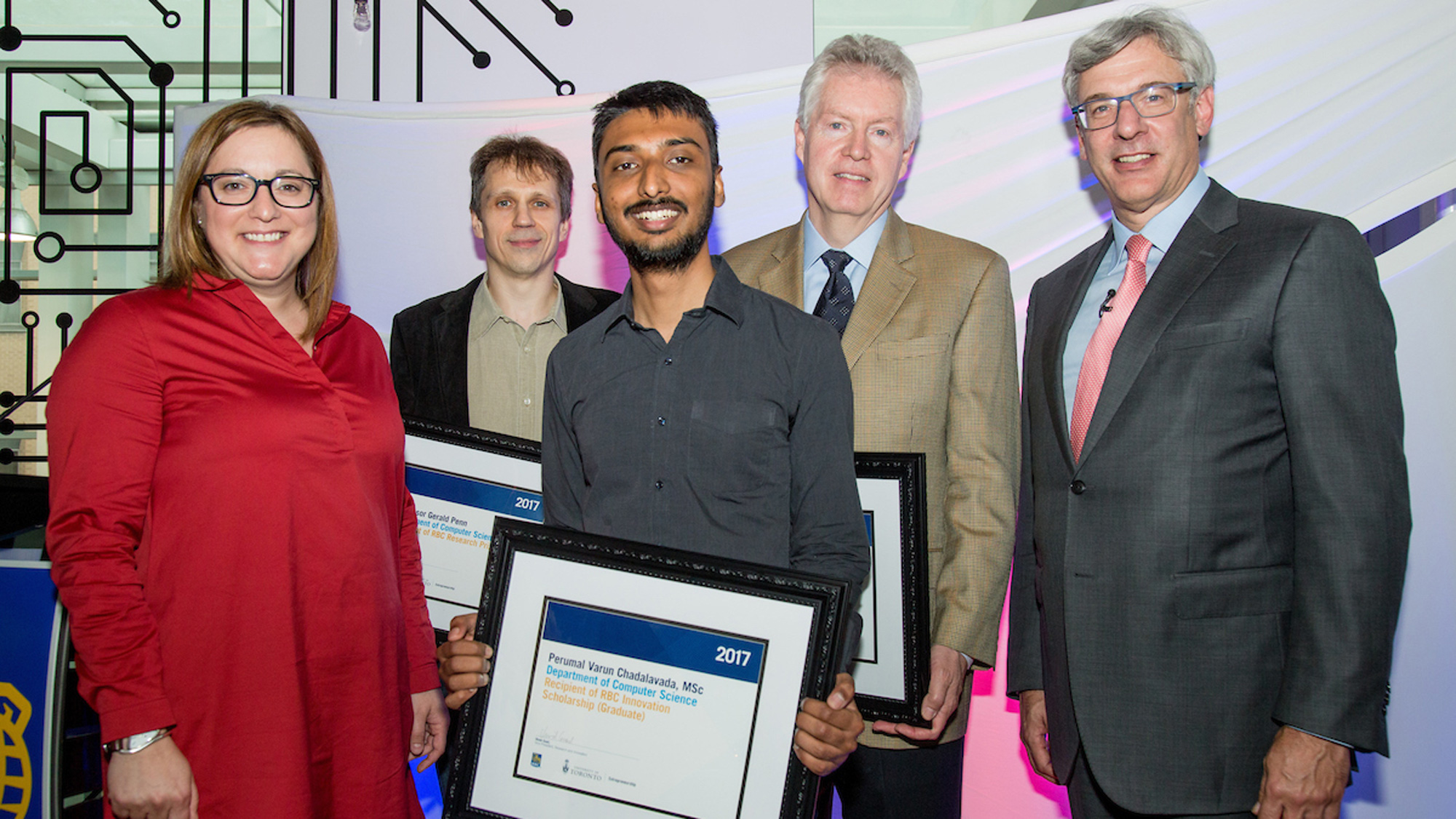
RBC and the University of Toronto recently partnered up to create the RBC Innovation Fellowship program, a joint venture designed to recognize exceptional faculty and graduate students and to provide them with additional resources to advance their research.
The three prizes are awarded to those who exhibit the potential to make significant contributions to the body of research in their respective fields, and preference is given to those who have demonstrated an interest in entrepreneurship and company creation.
The RBC Research Prize 2017 winners come from a variety of disciplines, including Machine Learning and Advanced Data Analytics, Cybersecurity, and User Experience Design/Design Thinking/Human-Machine Interfaces.
We’re pleased to introduce you to our outstanding group.
Varun Perumal
This year’s Fellowship winner is Varun Perumal, a Human-Computer interaction researcher and bonafide hardware engineering fanatic, whose Printem film make it possible for anyone with a home printer to produce their own electronic circuit boards.
Give us a brief overview of your winning proposal
My research is primarily about creating novel fabrication techniques – the process of making physical things – that will change the future of how we manufacture. Just as 3D printing has made advances in decentralizing and speeding up the production of mechanical products, we’re trying to do something similar for electronics, mainly the components that go into your devices.
What’s your biggest success story to date?
One of the technologies we developed is called Printem, which does to the creation of circuits what Polaroid did for photography. In the past, the process to develop photos involved multiple processes in a wet lab. Polaroid simplified and compacted the process into a single photo. The camera was just exposing the film to light and all the smarts were in the film itself. Our technology is similarly based on this special film we developed. It lets anybody with access to a home office printer print out circuits using nothing more than their standard printer and our Printem film. We’re building a company out of this product now.
What made you want to apply for the RBC Research Prize?
To me there are two significant benefits. One, it makes life easier when you’re trying to get the product of your research into people’s hands. Now I can make more samples of my product for feedback, testing, and collaboration. Two, the award gives more visibility to this research. In academia, you see a lot of interesting and cool research that doesn’t get exposure outside our academic circles. I hope I can use this exposure to find some more interesting collaborations.
What are you able to do now with these resources?
A lot of exploration. The first thing we’re already starting to do is make a few hundred beta versions of the Printem film so we can give it out to people who want to try it. We’re also talking to people in other disciplines to see what kind of fabrication problems we can solve together and evaluating from a business standpoint how this would benefit STEM education in high schools or middle schools.
What’s your ultimate goal?
The goal of my research, philosophically, is to change our current manufacturing paradigm of using a lot of smart machines but “dumb” materials. We want to reverse that and use more ubiquitous machines you can find everywhere, but smarter materials. This way they’re easier to access for people as they become easier to distribute geographically and more realistic economically because the cost of ownership isn’t that high. Hopefully through this work with the fellowship support, we can make it a reality.
Gerald Penn & Cosmin Munteau
Give us a brief overview of your winning proposal
One of the interesting challenges we’re facing is that everyone’s jumping on the AI bandwagon, but we don’t have a very good human interface for it yet. In the finance world, for example, high-level financial analysts – these are people who do long-term planning for large investment firms or banks – still use pen and paper. It’s shock from a tech perspective. There’s nothing wrong with it per se, but they’re not benefitting from all these machine learning and NLP advances. The essence of our proposal is to make sure these people can benefit from the technology and to address the problem that the software currently available to support these tasks isn’t designed well for their purposes.
What made you want to apply for the RBC Research Prize?
In many ways, it’s the perfect match and a great opportunity to bring together this research field and the domain where it could be applied. Through the grant, the partnership helps us do some knowledge translation that will ultimately allow us to inform the financial sector about the areas we think are good long-term opportunities for them.
What are you able to do now with these resources?
We’re in a sweet spot of expertise because we’re coming from a lab that is close to inventing AI: There’s lots of expertise in NLP and a significant expertise in human factors and interface design where they’re combining this. On the other side are highly skilled financial analysts. We’re looking at developing a middle ground in terms of the software that brings all these knitting pieces together.
What’s your ultimate goal?
One of my personal goals is to have the financial sector look beyond the technology itself to the human factors and the user experience design. I’m hoping to deliver more interest in this space. There are a lot of other sectors that are in dire need of the financial sector’s resources in serving the front-end customers, the boomer population, and in expanding the capabilities of these technologies, not just for the highly skilled analysts, but for everyone around all aspects of this industry.
News
Borealis AI opens its doors for a ‘mad’ launch party
News
Launch party gallery
News